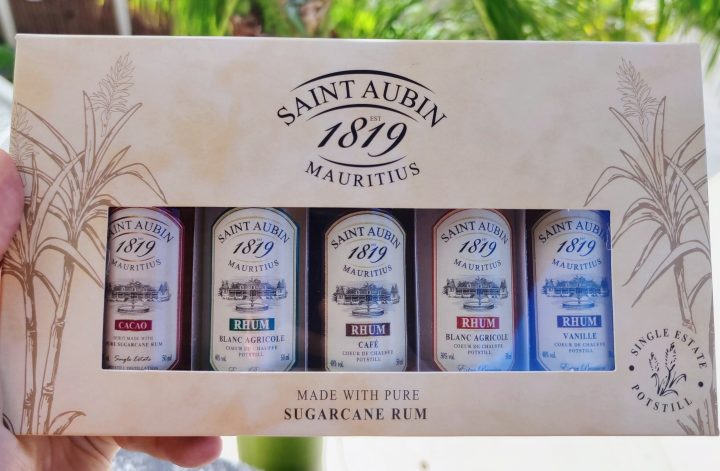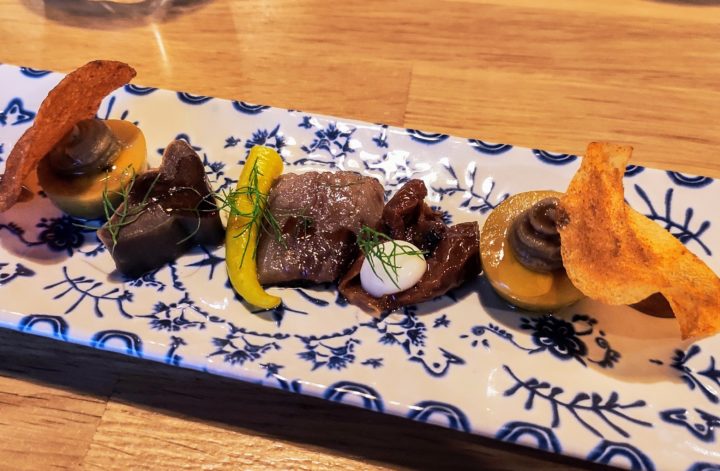Spain, a country filled with passion, flamenco, sun, and incredible gastronomic specialties. Every time I return from Spain, I bring back a vast amount of local delicacies. Be it the dried ham Jamón, chorizo, exceptional Spanish cheeses, or my favorite sweet cookies polvoronés. What do I regularly bring from my Spanish trips? What are my recommendations for the best gastronomic souvenirs?
Spanish dried ham Jamón de Cebo Iberico
Dried ham is one of the most prestigious and sought-after Spanish delicacies. The name “Ibérico” refers to the breed of pig from which this special ham originates – the Iberian pigs. This breed is considered one of the oldest in the world, known for its specific genetic profile, which allows the accumulation of a large amount of fat in the muscles, key to its distinctive taste. Ham from the pork leg undergoes a lengthy and meticulous aging process, often lasting several years. The result is a soft, sweet meat delicacy with a perfect taste. It’s consumed sliced into very thin pieces.

In this Spanish delicacy package, the ham is complemented by chorizo salami and salchichón, as well as slices of marinated meat from the pork loin (caña lomo cebo ibérico). Products from Iberian pigs are indeed more expensive, but in my opinion, it’s worth trying at least once. The taste is genuinely richer and more intriguing. This 200g package cost 5.95 Euros, and the meat was aged for at least 24 months.
Spanish dried ham Jamón Serrano
The word “Serrano” in the ham’s name comes from the Spanish word “sierra”, meaning “mountain”. The name of this most famous and accessible Spanish ham can be translated as “mountain ham”. This designation refers to the tradition of aging ham at high altitudes, where the cool and dry climate assists in the aging process.

Jamón Serrano is one of the most popular and widespread types of ham in Spain. Unlike Jamón Ibérico, which comes from Iberian pigs, Serrano is often made from common white pigs. The production and aging process is similar to Jamón Ibérico, but it usually takes less time, and the resulting taste and texture are different (but still excellent). Currently, the term “Serrano” is often used more for marketing purposes and doesn’t necessarily mean that the ham is aged in the mountains. This 240g package of dried ham aged 14 months cost 3.88 Euros.
Spanish chorizo sausage
Traditional chorizo sausage is known for its distinctive red color and strong taste. It is one of the most famous and widespread products of Spanish cuisine and is popular not only in Spain but all over the world. The main ingredients of chorizo are pork meat and fat, both chopped into smaller pieces. In addition to other spices, paprika is a fundamental ingredient that gives the sausage its typical red color and spicy flavor. Other herbs and spices often vary according to regional recipes; this particular sausage follows the “chorizo Riojano” recipe (from the Spanish region of Rioja, primarily known for its wines).

There are many variations of chorizo, ranging from sweet to very spicy. Some are meant for immediate consumption, while others are designed to mature for several months. Aged chorizo can be consumed without cooking, while some fresh types need to be cooked. Chorizo is often used in Spanish dishes such as paella. It is also popular as tapas and, of course, is used in pintxos as well.

The entire chorizo sausage cost just under 3 Euros (when buying 2 pieces), and the sliced sausage cost 1.66 Euros in both 100g packages.

Spanish cheeses
Idiazabal is a local specialty from the Basque Country and Navarre in northern Spain. It’s made from the milk of the Latxa and Carranza sheep breeds, which thrive in the local mountains. The cheese has a distinct flavor, resulting from a traditional aging process during which the cheese is smoked over wood such as beech, hawthorn, or cherry. Idiazabal cheese has been awarded the Protected Designation of Origin (PDO) status, ensuring that the cheese is produced following strict standards and traditional methods. This 250g package of cheese, which won a bronze medal at the “World Cheese Awards,” cost 4.95 Euros. A delicacy I recommend trying.

Among other famous Spanish cheeses are, for instance:
- Manchego: This cheese comes from the La Mancha region and is made from the milk of Manchega sheep. It ages for varying durations, resulting in textures ranging from soft to crumbly. Its taste is nutty, slightly salty, and intensifies with longer aging periods.
- Cabrales: The blue cheese Cabrales hails from Asturias. It’s made from cow’s milk or a blend of cow, sheep, and goat’s milk, and has a strong, pungent taste and creamy texture.
- Tetilla: The Tetilla cheese, named after its shape resembling a woman’s breast, originates from Galicia. It’s a cow’s milk cheese with a mild buttery flavor.
- Mahon: This cheese comes from the Balearic island of Menorca. Depending on its age, Mahon has a mild to spicy taste and features a characteristic orange rind, which is a result of being rubbed with paprika.
- Zamorano: A sheep’s milk cheese from the province of Zamora, it’s similar to Manchego but possesses a unique, slightly crumbly texture and nutty flavor, resulting from the use of milk from a different sheep breed and a specific aging process.
- Roncal: The Roncal cheese comes from the Navarra region and is made from sheep’s milk. It matures for at least 4 months, achieving a pronounced flavor.
- Torta del Casar: A sheep’s milk cheese produced in Extremadura, it’s creamy and spreadable. Its taste is slightly bitter.

Whenever I visit Spain, I always bring back several packs of pre-sliced cheese. This particular pack, made from a mix of cow, sheep, and goat’s milk, a 330g pack cost 4 Euros.

Boquerones
In Spanish, “boquerones” refers to a type of small fish, specifically European anchovies, which are preserved in vinegar and salt and flavored with garlic and parsley. These marinated anchovies, with their distinctly white color, are significantly different from the anchovies often found on pizzas or in salads like Caesar (see image below). Boquerones are commonly served as tapas in Spain. This pack cost 1.99 Euros.

Spanish anchovies
Anchovies, in Spanish “anchoas”, are a symbol of Spain’s rich culinary heritage. They are salted and preserved in oil, which gives them a more intense flavor and a reddish-brown color (quite different from the “boquerones” anchovies). I love anchovies, and if you do too, then Spain is the promised land for you. Quality anchovies can be quite expensive; in the pintxos capital, San Sebastian, it’s not uncommon to pay 4.50 Euros for two small, but top-quality, anchovies on a slice of white bread. However, this trio of anchovies cost just under 3 Euros.

Pan de Higo con Almendra (fig cake with almonds)
Originates from the regions of Andalusia and Murcia. It’s a Spanish dessert made from ground dried figs mixed with a blend of spices and occasionally a splash of brandy or rum. The “Almendra” variant contains almonds, adding a crunch to it. Pan de Higo often appears on Spanish tables during the holiday season, especially Christmas. However, it’s so versatile that you can enjoy it all year round. It pairs wonderfully with cheeses, particularly with Manchego cheese. This 200g vegan treat cost 3 Euros.

Cocoa for preparing hot chocolate
One of the most famous Spanish desserts is churros, a fried pastry served with a cup of thick chocolate. The first cocoa beans were brought to Spain in the early 16th century following the discovery of America. Spain was one of the first European countries to discover the delights of cocoa and played a crucial role in popularizing chocolate in Europe. The hot chocolate that accompanies churros has a thick, almost pudding-like consistency. That’s why I brought back this 200g pack of cocoa specially designed for preparing hot chocolate. One package cost 2.69 Euros.

Spanish chocolate
The Spanish’s affection for chocolate is (not just) thanks to churros, overwhelmingly positive. This time, I brought back chocolate from the Spanish chocolatier Valor, which was established back in 1881.

One bar of chocolate cost approximately 1.70 Euros. For the chocolate with 85% cacao content, it was a 100 g package; for the 70% cacao content, it was a 125 g package. This chocolate has no added sugar, making it very suitable if you watch your sugar intake (specifically, these two contain less than half a gram of sugar per 100 g of chocolate).

Spanish mantecado cookies
This delicate pastry originates from Andalusia in southern Spain. The name “mantecado” derives from the word “manteca”, which means “lard” in Spanish. Lard, specifically from Iberian pigs, is the main ingredient in the mantecado recipe. It gives these sweets a unique delicate structure. It most reminds me of “compact sand”; under any significant pressure, it indeed crumbles into small grains. However, it simply melts in the mouth. Mantecados are often wrapped in beautifully decorated packages. The packaging in this case is practical and almost essential, as the cookies are genuinely very fragile. One 190 g package of mantecado cookies captured in the picture cost me 1.60 Euros.

Spanish polvorónes cookies
A special subgroup of mantecado cookies are polvorónes. The name “polvorónes” is derived from the Spanish word “polvo”, meaning “powder”. This name aptly describes the essence of these cookies, as they easily turn into dust (I say “sand”) at the slightest touch. Main ingredients include flour, sugar, and lard, complemented by almonds. Thus, polvorónes are significantly pricier than mantecado cookies. According to legend, polvorónes have Moorish roots, stemming from the historical connection between Spain and the Muslim world. This era introduced the frequent use of almonds in Spanish confections, and it is believed that polvorónes are a legacy of this cultural exchange. The cookies are individually wrapped in colorful paper (the vibrant wrappers remind me of a Sardinian treat called gueffus). You’ll encounter polvorónes at supermarket entrances, often sold by weight. This allows you to choose the flavor you like best.

What delicacies do you bring back from Spain?


